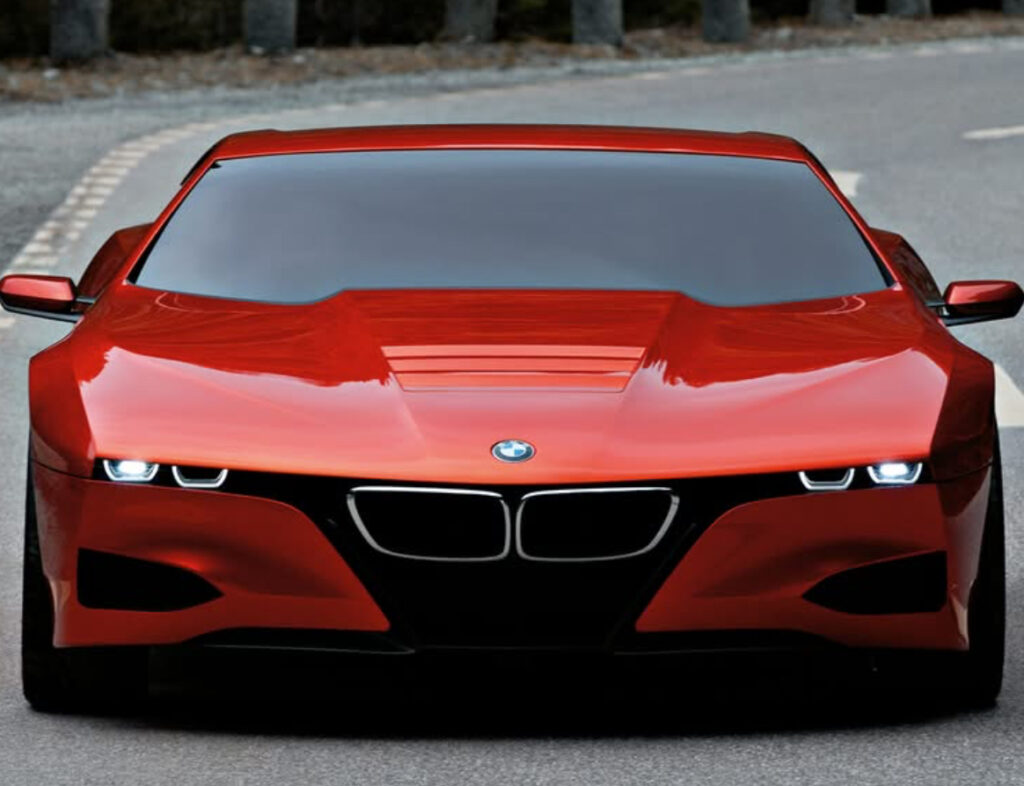In 2008, BMW unveiled a design exercise so sharply defined, so provocatively sculptural, that it seemed to emerge not from an engineering lab but from the subconscious of every car designer who ever idolized speed. Known as the BMW M1 Hommage, this concept vehicle wasn’t just a celebration of a model—it was a monument to a moment in automotive history, when a manufacturer famous for sedans dared to build something radically different: a mid-engine supercar.
The Hommage concept was revealed to mark the 30th anniversary of the BMW M1, a vehicle that ran from 1978 to 1981 and remains the only true mid-engine supercar ever produced by the brand. It was a project mired in political delay, born from a failed merge with Lamborghini, and limited in its commercial success. But over time, the M1 transformed from curiosity to cult object, appreciated for its rarity, performance pedigree, and a design penned by Giorgetto Giugiaro—one of the gods of late 20th-century automotive form.
The M1 Hommage didn’t promise a production future. It didn’t need to. Its mission was purer, more romantic: to reflect and extend the visual language of the original, while expressing what BMW’s design ethos might become in an era increasingly ruled by digitalization and aerodynamic necessity. In doing so, the Hommage not only honored the M1—it helped redefine how legacy and innovation could speak to each other across time.
The Original M1: A Misunderstood Masterpiece
To understand the Hommage, we must return to the source. The BMW M1 (E26) emerged during a period when BMW Motorsport sought to create a halo vehicle that would catapult the brand into the realm of true high-performance manufacturers. The brief: a car that could homologate for Group 4 racing but still be street legal.
Initially, BMW partnered with Lamborghini to develop the chassis and produce the cars in Italy. The project was fraught with complications, ranging from delays in development to Lamborghini’s financial instability. BMW eventually pulled the project back in-house, with engineering overseen by Paul Rosche, the famed architect of BMW’s racing engines, and bodywork finalized by Giugiaro, who based the design on his earlier BMW Turbo concept.
The result was a car powered by a 3.5-liter inline-six engine producing 273 horsepower (in street form) and paired to a 5-speed ZF manual. Its fiberglass body cloaked a spaceframe chassis built by Gianpaolo Dallara, and it featured a near-perfect 50:50 weight distribution. While only 453 units were ever built, the M1 left a lasting impression. It was the foundation for BMW’s M Division—and an enduring symbol of what happens when German precision collides with Italian sensuality.
The Hommage Appears: A Quiet Storm
When BMW unveiled the M1 Hommage Concept at the 2008 Concorso d’Eleganza Villa d’Este, it wasn’t with the bombast typically associated with supercar announcements. There was no engine spec, no Nürburgring lap time. Just design.
The Hommage was created under the guidance of Anders Warming, then Head of Exterior Design at BMW. It retained the wedge silhouette and mid-engine proportions of the original M1 but replaced the crisp origami lines of Giugiaro’s design with liquid surfacing, a visual language that had begun to define BMW in the 2000s.
The surfaces were taut and muscular, with aggressive flaring over the rear wheels, a pronounced shoulder line, and deep scallops along the sides. The kidney grilles sat low and wide, almost horizontal slits—a nod to the original’s shark-nose stance. The twin round headlights? Hidden again, this time under slats integrated into the hood, a modern reinterpretation of the M1’s iconic pop-up lamps.
Design: Form and Memory
Every line of the M1 Hommage whispers in homage to its ancestor, yet every curve speaks of evolution. The contrast is deliberate. Where Giugiaro’s car is rectilinear and composed, the Hommage is sculpted and expressive.
The key differences include:
- Surface Treatment: Gone are the hard creases of the original. In their place: sinuous surfaces that catch light dynamically, echoing the BMW CS Concept and Z4 of the same period.
- Rear Detailing: The slatted engine cover and three-piece taillight motif recall the original, but now executed with LED technology and integrated aerodynamic thinking.
- Proportions: Longer, wider, and lower than the original, the Hommage looks like it’s carved from motion itself—even while standing still.
Inside, BMW never revealed a full interior for the Hommage. This omission added to the mystique. The car was not meant to be driven. It was meant to be dreamt about.
Hommage, Not Retro
What sets the M1 Hommage apart from other throwback concepts is its resistance to nostalgia. It never feels retro. It doesn’t rely on badges or chrome accents or cartoonish tributes. Instead, it translates the principles of the M1—balance, clarity, aggression—into a future-oriented dialect.
In this way, the Hommage does what the best design studies do: it connects past to possibility, not by copying shapes but by carrying forward intent.
Influence: From Dream to Design DNA
Though the M1 Hommage was never intended for production, its influence rippled outward. One clear descendant: the BMW i8.
Unveiled as a concept in 2009 (as the Vision EfficientDynamics), the i8 shared the Hommage’s mid-engine proportions, wedge profile, and flowing surfacing. Its design team—led by Benoit Jacob—was surely aware of the Hommage’s proportions and philosophy.
But perhaps more subtly, the Hommage emboldened BMW to re-engage with the emotional potential of its design language. In a decade where many OEMs pursued bland “premium minimalism,” the Hommage reminded everyone that a BMW could be sculptural, sensual, even mysterious.
It also helped legitimize a design strategy BMW would lean into for the next decade: heritage as material, not marketing.
The Power of Conceptual Storytelling
It’s easy to forget that the M1 Hommage wasn’t meant to sell anything. No orders were taken. No performance claims were made. It was a story told in steel, glass, and background—an act of creative remembrance that took place quietly by a lake in Italy.
But within that story lies a deeper truth about design: sometimes, we must build monuments to memory, not to capitalize on the past, but to understand what it meant.
The M1 Hommage achieves this with elegance and force. It’s not the ghost of the M1. It’s its echo—reverberating forward.
Impression
In the end, the BMW M1 Hommage is less about what could’ve been and more about what was—and how we choose to honor that legacy. It invites us to imagine a future where design isn’t enslaved by nostalgia but energized by it, where brands revisit their roots not to resell history but to rekindle vision.
The M1 Hommage may never have roared down a racetrack. It may never have hit a showroom floor. But its legacy is secured—not as a lost supercar, but as a gesture of reverence made material.
No comments yet.








